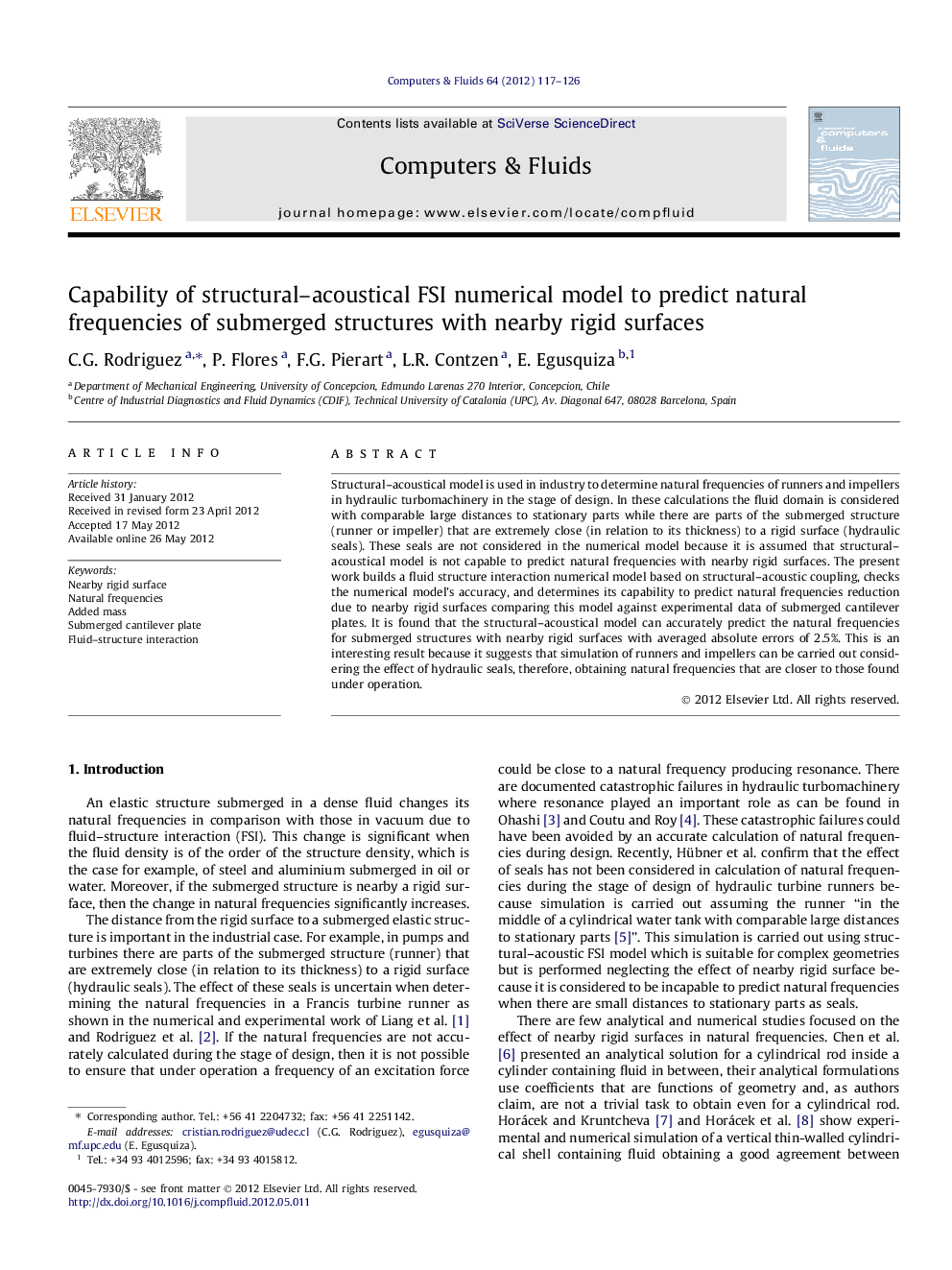| Article ID | Journal | Published Year | Pages | File Type |
|---|---|---|---|---|
| 756786 | Computers & Fluids | 2012 | 10 Pages |
Structural–acoustical model is used in industry to determine natural frequencies of runners and impellers in hydraulic turbomachinery in the stage of design. In these calculations the fluid domain is considered with comparable large distances to stationary parts while there are parts of the submerged structure (runner or impeller) that are extremely close (in relation to its thickness) to a rigid surface (hydraulic seals). These seals are not considered in the numerical model because it is assumed that structural–acoustical model is not capable to predict natural frequencies with nearby rigid surfaces. The present work builds a fluid structure interaction numerical model based on structural–acoustic coupling, checks the numerical model’s accuracy, and determines its capability to predict natural frequencies reduction due to nearby rigid surfaces comparing this model against experimental data of submerged cantilever plates. It is found that the structural–acoustical model can accurately predict the natural frequencies for submerged structures with nearby rigid surfaces with averaged absolute errors of 2.5%. This is an interesting result because it suggests that simulation of runners and impellers can be carried out considering the effect of hydraulic seals, therefore, obtaining natural frequencies that are closer to those found under operation.
